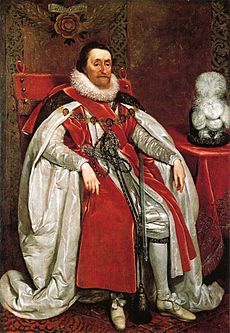British Isles facts for kids
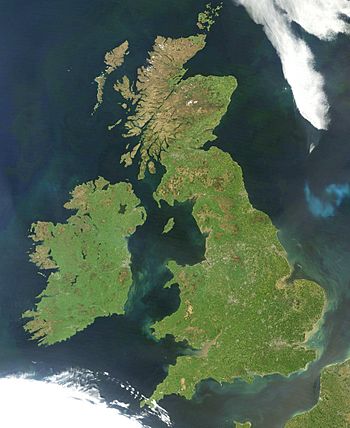
A 2012 NASA satellite image of the British Isles. Shetland and the Channel Islands are not in the picture.
|
|
 |
|
| Geography | |
| Location | North-western Europe |
| Coordinates | 54°N 4°W / 54°N 4°W |
| Adjacent bodies of water | Atlantic Ocean |
| Total islands | 6,000+ |
| Area | 315,159 km2 (121,684 sq mi) |
| Highest elevation | 1,345 m (4,413 ft) |
| Highest point | Ben Nevis, Scotland |
| Demographics | |
| Population | 71,891,524 (2019) |
| Pop. density | 216 /km2 (559 /sq mi) |
| Languages | English, Welsh, Cornish, Irish, Manx, Scots, Scottish Gaelic, French, Guernésiais, Jèrriais, Sercquiais, Shelta, Ulster-Scots, Angloromani, British Sign Language, Irish Sign Language |
| Additional information | |
| Time zone | |
| • Summer (DST) | |
| Drives on the | left |
|
|
The British Isles are a group of islands, called an archipelago, in the North Atlantic Ocean. They are located off the north-western coast of mainland Europe. The archipelago includes two large islands, Great Britain and Ireland, and more than 6,000 smaller islands, such as the Isle of Man, the Hebrides, Orkney, and Shetland.
The islands are home to two countries: the Republic of Ireland and the United Kingdom of Great Britain and Northern Ireland. The Channel Islands are also often considered part of the group.
While "British Isles" is a common geographical name, some people, especially in Ireland, prefer not to use it because the word "British" can be seen as political. Alternative names like "Britain and Ireland" are often used. Sometimes, official agreements just call them "these islands" to be neutral.
Contents
Geography and Climate
The British Isles have a long and complex geological history. The oldest rocks found here are 2.7 billion years old. Over millions of years, landmasses collided and shifted to form the islands we see today. Glaciers during the Ice Age also carved out many of the valleys and lakes.
The landscape is quite varied. The highest mountain is Ben Nevis in Scotland, which is 1,345 metres high. There are also many rolling hills and flat lowlands, especially in southern England and central Ireland. The largest lake is Lough Neagh in Northern Ireland. The longest river is the River Shannon in Ireland.
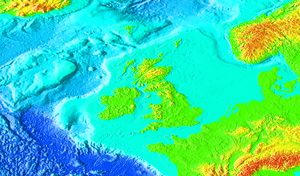
What is the Climate Like?
The climate in the British Isles is a temperate marine climate. This means it has cool winters and warm summers, but no extreme temperatures. It is known for being mild, moist, and changeable, so you can often experience different types of weather in one day!
A warm ocean current called the North Atlantic drift flows from the Gulf of Mexico. It brings moisture and keeps temperatures warmer than other places at the same latitude. This current is why the islands get a lot of rain and have green landscapes.
Wildlife of the Islands
The mild climate and different types of soil allow a wide variety of plants and animals to live here. The wildlife is similar to that of north-western Europe, but there are fewer species on the islands. Ireland has even fewer native species than Great Britain because it was separated by sea earlier.
Plants and Forests
Thousands of years ago, most of Britain and Ireland were covered in forests. Over time, people cleared most of the forests for farming. Today, much of the land is farmland, but there are still large forests in Scotland and parts of England.
Common trees include oak, ash, and beech in England, while pine and birch are common in Scotland. The islands are also famous for their green fields, hedgerows, and moors covered in heather.
Animals and Birds
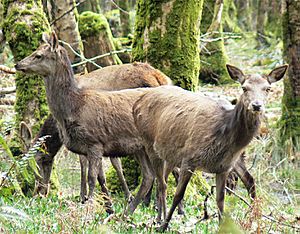
Many large animals that once lived here, like wolves and bears, are now extinct. However, protected species like the red deer still live in the wild. Smaller mammals are very common, including foxes, badgers, rabbits, and stoats. Otters can be found in rivers, and seals are often seen along the coasts.
The British Isles are a great place for birdwatching, with about 250 bird species regularly seen. Some of the most common birds are the robin, blackbird, and house sparrow. The rivers and lakes are full of fish like salmon and trout.
History of the British Isles
The first humans arrived in the British Isles when the islands were still connected to mainland Europe by a land bridge called Doggerland. Great Britain became an island about 7,000 BC when sea levels rose and flooded this bridge.
Early Peoples
At the beginning of the 1st millennium BC, the islands were inhabited by people who spoke Insular Celtic languages, such as the Gaels, Picts, and Britons.
Around 2,000 years ago, the Roman Empire conquered the southern part of Great Britain. They built roads, towns, and the famous Hadrian's Wall to mark the northern edge of their empire.
Invasions and Kingdoms
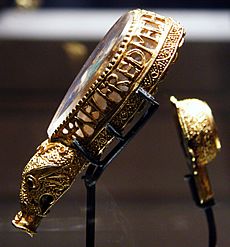
After the Romans left in the 5th century, Anglo-Saxons from Europe arrived and settled in what is now England. Starting in the 9th century, Viking invasions brought more settlers, especially in the north and east.
In 1066, the Norman conquest of England brought a new ruling class and a French-speaking culture. Over the next few centuries, Great Britain was divided into the Kingdom of England and the Kingdom of Scotland.
The United Kingdom
The kingdoms of England and Scotland were separate for a long time. In 1603, King James VI of Scotland also became the king of England, which was called the Union of the Crowns. In 1707, the Acts of Union officially joined the two kingdoms to create the Kingdom of Great Britain.
In 1801, the Act of Union joined Great Britain and Ireland to create the United Kingdom of Great Britain and Ireland. During this time, the British Empire grew to become the largest in history.
Modern Times
In the early 20th century, after the Irish War of Independence, most of Ireland became a separate state. Six counties in the north remained part of the UK, forming Northern Ireland. Today, the two main states are the Republic of Ireland and the United Kingdom.
People and Government
England has the highest population density, with about 80% of the total population of the islands living there. The largest city is London. Other major cities include Manchester, Glasgow, Dublin, and Cardiff.
The main language spoken is English, but there are also several other native languages. These include Welsh, Irish, and Scottish Gaelic.
How are the Islands Governed?
There are two independent countries in the British Isles:
- The United Kingdom (UK), which is made up of four parts: England, Scotland, Wales, and Northern Ireland.
- The Republic of Ireland, which covers most of the island of Ireland.
Scotland, Wales, and Northern Ireland have their own devolved governments, which means they can make their own laws on certain matters like education and health.
The Isle of Man and the Channel Islands are Crown Dependencies. They are not part of the UK, but the UK is responsible for their defence and international relations.
All the governments in the British Isles work together on issues that affect everyone. The British–Irish Council was set up to help the leaders from all the different governments talk and cooperate with each other.
Major Urban Areas
| Rank | Urban area | Population | Country |
|---|---|---|---|
| 1 | London | 9,787,426 | England |
| 2 | Greater Manchester | 2,553,379 | England |
| 3 | West Midlands Conurbation | 2,440,986 | England |
| 4 | West Yorkshire Urban Area | 1,777,934 | England |
| 5 | Glasgow | 1,209,143 | Scotland |
| 6 | Dublin | 1,173,179 | Republic of Ireland |
| 7 | Liverpool | 864,122 | England |
| 8 | South Hampshire | 855,569 | England |
| 9 | Tyneside | 774,891 | England |
| 10 | Nottingham | 729,977 | England |
| 11 | Sheffield | 685,386 | England |
| 12 | Bristol | 617,280 | England |
| 13 | Belfast | 595,879 | Northern Ireland |
| 14 | Leicester | 508,916 | England |
| 15 | Edinburgh | 482,005 | Scotland |
Culture and Sports
The United Kingdom and Ireland have their own unique cultures, but they also share many things. British television, newspapers, and music are widely available in Ireland, and many people share an interest in the same TV shows and cultural events.
Many of the world's most popular sports were first played with modern rules in the British Isles. These include association football (soccer), rugby, golf, cricket, and darts.
Football is extremely popular across all the islands, with famous leagues and national teams. Rugby union is also very popular. The national teams of England, Ireland, Scotland, and Wales compete every year in the Six Nations Championship. A special team called the British and Irish Lions, with players from all four nations, tours other countries every four years.
See also
 In Spanish: Islas británicas para niños
In Spanish: Islas británicas para niños
- British Islands
- Extreme points of the British Isles
- List of islands of the British Isles


